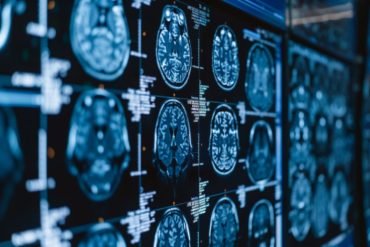Summary: Researchers discovered that pupil dilation can indicate levels of working memory. In a study, researchers observed that individuals whose pupils dilated more while performing memory tasks tended to have better working memory.
This relationship between pupil dilation and memory performance suggests that pupil metrics could potentially serve as non-invasive indicators of cognitive load and memory capacity. The study involved 179 undergraduate students who performed various working memory tasks while their pupil responses were monitored.
Key Facts:
- The study found a positive correlation between pupil dilation during cognitive tasks and higher working memory performance.
- Participants with greater pupil dilation were able to better recall and process information.
- This research opens the possibility of using pupil dilation as a simple, non-invasive measure of working memory in cognitive assessments.
Source: UT Arlington
Working memory is one of the brain’s executive functions, a skill that allows humans to process information without losing track of what they’re doing.
In the short term, working memory allows the brain to complete an immediate task, like loading the dishwasher. Long-term, it helps the brain decide what to store for future use, such as whether more dishwasher soap will be needed.

University of Texas at Arlington researchers know that working memory varies greatly among individuals, but they aren’t sure exactly why.
To better understand, Matthew Robison, assistant professor of psychology, and doctoral student Lauren D. Garner conducted an experiment to see whether studying a person’s pupils (the centers of their eyes) was a good indicator of working memory.
Normally, a person’s pupils naturally widen (or dilate) in low-light environments to allow more light into the eye.
However, in their new study published in Attention, Perception, & Psychophysics, the researchers reported that a person’s pupils also dilate when they are concentrating on tasks.
In particular, they found that the more a person’s eyes dilated during the task, the better they did on tests measuring their working memory.
“What we found was that the lowest performers on the tasks showed less pupil dilation,” Robison said.
“For the highest-performing participants, their pupil dilations were both larger overall and the individuals were more discerning about the information they were asked to recall.”
For the study, he and Garner recruited 179 undergraduate students at UT Arlington. Participants completed several working memory tasks where they were presented with information and then asked to remember it for a few seconds.
During the tasks, participants had their pupils continuously measured using an eye-tracker, similar to what optometrists use during eye exams.
“We found that people who more intensely and consistently paid attention, as measured by their pupils being dilated more, performed better on the memory tasks,” said Robison.
“Importantly, we found high performers also showed more pupil sensitivity compared to low-performing participants. This is exciting research because it adds another valuable piece of the puzzle to our understanding of why working memory varies between individuals.”
About this memory and visual neuroscience research news
Author: Katherine Egan Bennett
Source: UT Arlington
Contact: Katherine Egan Bennett – UT Arlington
Image: The image is credited to Neuroscience News
Original Research: Closed access.
“Pupillary correlates of individual differences in n-back task performance” by Matthew K. Robison et al. Attention, Perception, & Psychophysics
Abstract
Pupillary correlates of individual differences in n-back task performance
We used pupillometry during a 2-back task to examine individual differences in the intensity and consistency of attention and their relative role in a working memory task.
We used sensitivity, or the ability to distinguish targets (2-back matches) and nontargets, as the measure of task performance; task-evoked pupillary responses (TEPRs) as the measure of attentional intensity; and intraindividual pretrial pupil variability as the measure of attentional consistency.
TEPRs were greater on target trials compared with nontarget trials, although there was no difference in TEPR magnitude when participants answered correctly or incorrectly to targets.
Importantly, this effect interacted with performance: high performers showed a greater separation in their TEPRs between targets and nontargets, whereas there was little difference for low performers.
Further, in regression analysis, larger TEPRs on target trials predicted better performance, whereas larger TEPRs on nontarget trials predicted worse performance.
Sensitivity positively correlated with average pretrial pupil diameter and negatively correlated with intraindividual variability in pretrial pupil diameter.
Overall, we found evidence that both attentional intensity (TEPRs) and consistency (pretrial pupil variation) predict performance on an n-back working memory task.






